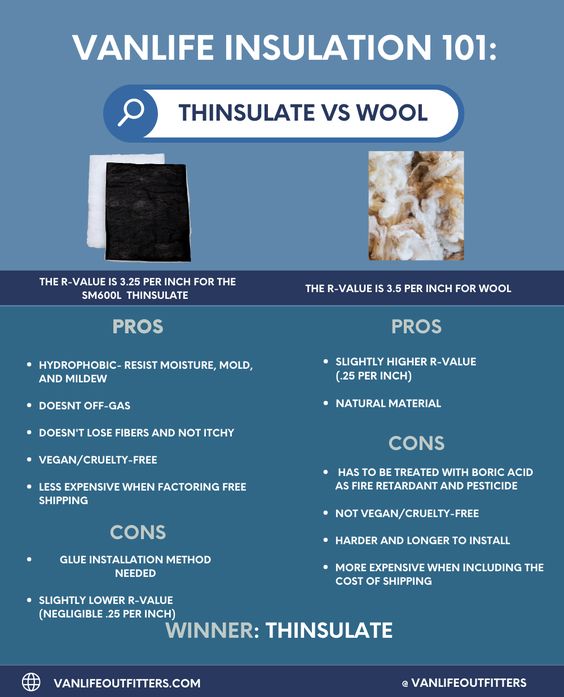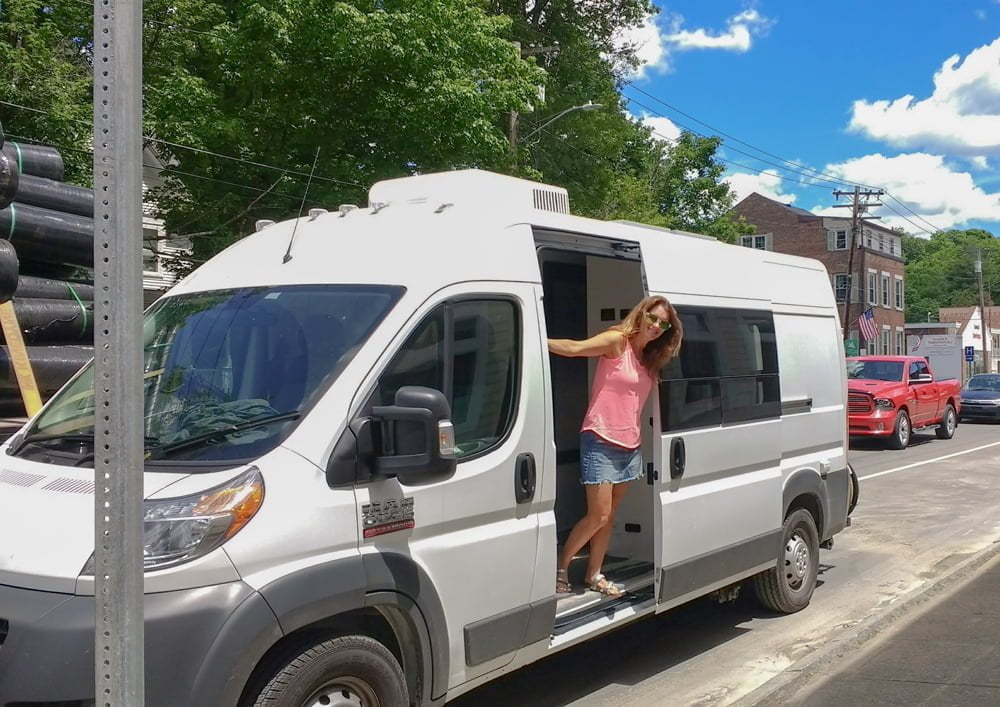Odd as it sounds, what to use for insulating your van has become known for being one of the more controversial vanlife topics in the community. Perhaps second only to the great indoor shower (or no shower) debate. Insulation is a hot topic for good reason. It’s important to have good insulation because it helps to prevent heat from rising inside the camper van during hotter months and prevents heat from escaping during cooler months and quiets the ride.
Choosing what type of insulation is also one of the first (of hundreds) of decisions to make when planning your van build. There are numerous vanlife insulation options for custom van builds and van conversions, as well as various methods for installing them. When choosing the right type of insulation for your van, it is important to understand the differences and compare van insulation options. The insulation you choose will become the core foundation for the climate and noise control of your van.
There are several different types of insulation options to choose from. They range from fiberglass insulation, spray foam, polyiso board, Thinsulate, wool, mineral wool and even recycled denim! In this blog post, we will discuss two of the most popular types of insulation that most vanlifers and professional van builders use in their van builds.
Thinsulate insulation is made from a type of insulating synthetic fiber, and it’s a thermal type of insulation. It is manufactured by 3M, a company who has been in business for over 100 years and has an excellent reputation. Thinsulate has undergone rigorous testing, studies and quality control. Thinsulate has an excellent name brand, is often used in thermal clothing and was once marketed as a more cost-effective option to down material. Most of the puffy jackets and sleeping bags that professional mountaineers use are made with Thinsulate or a similar synthetic material. The word Thinsulate describes the type of material, as it is thin and insulate. Thinsulate is considered superior to wool insulation for a few reasons. Thinsulate is hydrophobic which means it doesn’t absorb moisture and it repels it. It’s also non-toxic and easy to install. Most people install Thinsulate with 3M 90 spray adhesive, but, like many things these days it’s in short supply and hard to find (this post was written in mid-2021). We reached out to our 3M rep and asked what alternatives might work. He said that 3M 76, 77, or 78 spray adhesives might work but may be a little slower to dry. Also, double sided tape is often used and in automotive applications, hot melt glue is used. Another suggestion was to source 3M 90 adhesive in cans, buckets or tubs from places like Grainger. This could be easier to find and potentially less expensive as well if you’re insulating your entire van but you would need a sprayer.
Then there is wool. Most wool insulation options are known to absorb some moisture, and if (when?) it does it looses some of it’s insulating capacity. Wool is often treated with boric acid, a type of insect repellent. Most manufacturers disclose that wool insulation must be treated with this additive to reduce flammability and repel insects. However, this additive is considered to be poisonous if it is to be ingested and it can also cause irritations to the body, more specifically the nose, throat, eyes and skin. If you decide to install this type of insulation, it is important to wear protective gear and follow recommended procedures from the manufacturer.
Also, since wool comes from a sheep…it smells like a barnyard. That smell eventually goes away but not for several months up to a year. I personally can’t stand the smell. Thinsulate is odorless.
And for those who are concerned, wool is not a vegan product and is not cruelty free. In some cases, during the production and processes of obtaining wool, sheep are not always treated well. In the wild, sheep know how to take care of their wool, such as growing enough for winter months and shedding unnecessary excess wool during the summer months. However, in captivity, sheep are being bred to constantly produce more and more wool. This is making them much more susceptible to overheating or heatstroke and is the reason why sheep are needing to be sheared more often. Some sheep are being sheared carelessly and this is leading to wounds, pain and avoidable injuries. All sheep are eventually killed when their production decreases or if they become too old or sick.
Finally, wool insulation is a little more difficult to install and requires either holding the material up with tape/string or partially installing your walls and stuffing the material inside.
Now that you understand what each product is and how it’s manufactured or harvested and installed, let’s discuss the insulative properties of each and the costs associated with both.
R-Value
Thinsulate SM600L comes in 1.6” thickness and has an R-value of 3.25 per inch. The total R-value of the 1.6” material is 5.2 (3.25 x 1.6”). If you wanted to double up the Thinsulate, you’re R-value would be 10.4, however we feel that one layer of Thinsulate combined with a radiant barrier (Low-E) and air gaps is more than enough insulation
Most wool for vans comes in 2” thickness and has an R-value of 3.5 per inch. The major US supplier of Wool insulation sells it in 2” batts and therefore it has an overall R value of 7 (3.5 x 2”).
Cost
300 feet of Thinsulate from Vanlife Outfitters is approximately $500 with shipping.
300 feet of wool from the major US wool supplier is approximately $500 with shipping.
Final Verdict
We recommend Thinsulate over wool for it’s superior moisture management, ease of installation, non-toxic properties and the fact that animals aren’t mistreated in its production.


